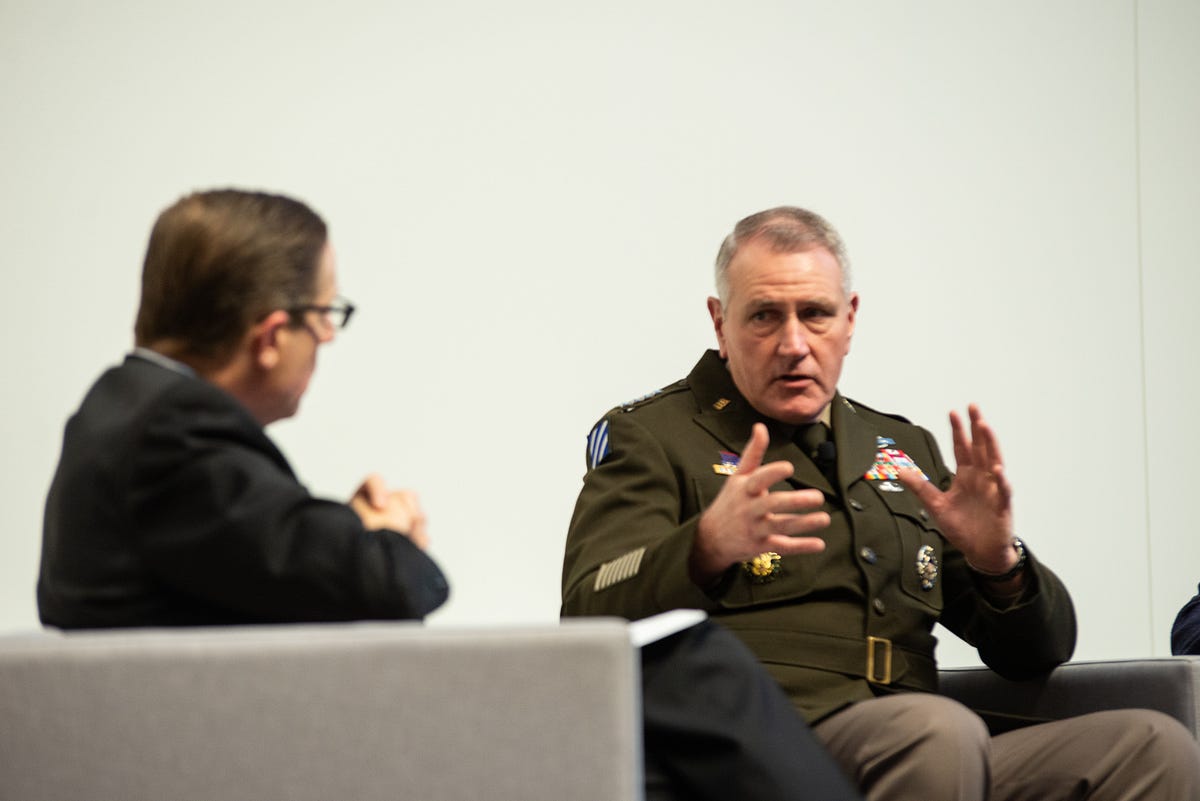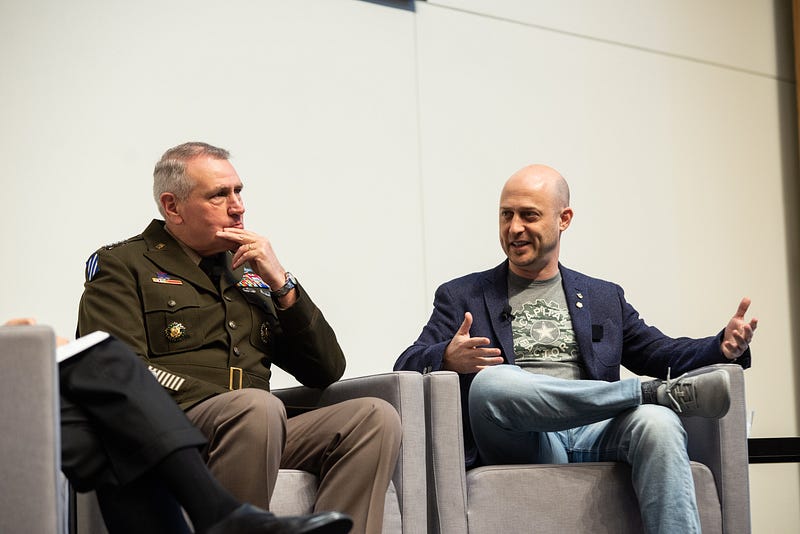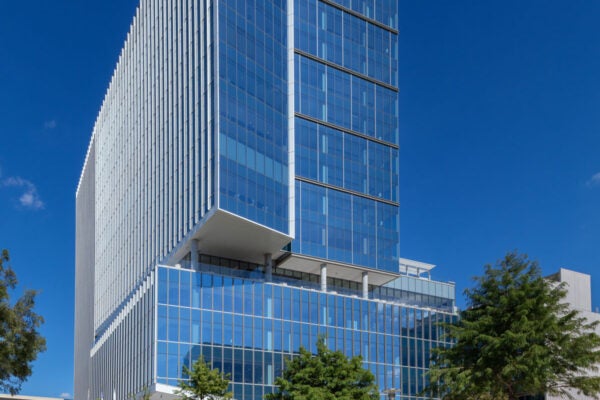Modernizing U.S. Army Moves to Austin
Army Futures Command taps into capital city’s culture of innovation

When the U.S. Army decided to innovate, it came to Austin.
The Army had been focused on the wars in Iraq and Afghanistan, with no unified effort to modernize. Under its existing processes and systems, the Army couldn’t keep up with the pace of technology development. “We realized that we had been wholly unsuccessful in modernizing, probably for the last three or four decades,” said General John Murray.
Murray, the commanding general of the Army Futures Command, was the featured speaker at the Texas McCombs Presents event on Jan. 8, joined by Joshua Baer, founder and chief executive of coworking community and accelerator Capital Factory, in a conversation moderated by Texas Tribune CEO Evan Smith. The central question of their conversation: why the AFC chose to locate in Austin.
In 2018, the Army Futures Command was established to modernize the Army’s technical capacity. Things moved quickly. Now, AFC has more than 24,000 personnel in 25 states and 15 countries, with more than 400 people in Austin, its new four-star Army Command headquarters. The modernization and equipment budget for fiscal year 2019 was just under $38 billion. Alongside its emphasis on technological innovation, the AFC is working to streamline processes.
“The key thing is linking Army problems with potential solutions,” Murray said.
Austin was selected from among 150 cities considered for the AFC’s headquarters. The city it chose needed to offer proximity to business and academia; density of workforce with science, technology, math, and engineering talent; and quality of life.

Capital Factory worked closely with the Austin Chamber of Commerce, UT System, and others to help make sure AFC chose Austin, and now AFC’s public-facing Army Applications Lab is an anchor of the Capital Factory Center for Defense Innovation.
Baer said the Army was impressed by Austin’s culture. “What I heard from them was that a lot of the other cities they went to said, ‘What are you going to do for us? What are you going to bring to the city?’ And what Austin said was, ‘Wow, how can you be part of Austin? How can we help be part of the mission?’ And I think they felt a different thing from Texas than from some other places,” Baer said.
Capital Factory helps source startups and technology for AFC, with more than 30 of the startups in its community earning government contracts in the past year as a result.
“This is team Austin like I’ve never seen it before,” Baer said, with San Antonio and other parts of Central Texas also fully on board.
This marks the first Army headquarters in a major U.S. urban area. Murray emphasized the importance of location.
“We knew this wouldn’t work if the headquarters was behind the gates at Ft. Hood or behind the gates at Ft. Bragg,” Murray said.
Proximity matters — “the ability to walk out of a location and quickly bump into that innovative spirit that Austin is known for,” Murray said. Conversely, it means visitors can come to AFC without passing through any gates.
The AFC has six modernization priorities: long range precision fires, next generation combat vehicles, future vertical lift (helicopters), communications infrastructure, air and missile defense, and “soldier lethality,” which Smith explained is “our ability to go get the bad guys and to protect our guys”.
As the ultimate users, soldiers will be involved throughout the process, starting at the prototype phase, giving feedback.
Many university and businesses would welcome Army investment, but the general’s focus is finding technology to solve Army problems. “There’s a lot of cool technology out there, but it’s really hard to take a piece of cool technology and then go find a problem it can solve” Murray said. So his process has flipped. “Let’s understand the problems we’re trying to solve first.”
Watch the full video below.
About this Post
Share:

